Keefe Created a New Fulfillment Center in Tucson
Prisons are like self-contained cities. They provide everything necessary for the well- being of the offenders they house. That includes: daily meals, clothing, housing, healthcare (medical and psychological, including substance abuse programs), jobs, laundry, educational and training opportunities and countless other services to meet the special needs of offenders. One service that may not immediately come to mind, but is in some ways equally important to some of the others, is the commissary (or offender store).
These types of operations in the country’s prisons and jails generate an estimated $1.6 billion1 in sales each year. Like a third of the state prison systems in the US, the Arizona Department of Corrections (ADC) contracts with a private company to provide this important service. These companies, with their economies of scale, can often provide these services and products at costs below what self-managed commissaries can.
For the last 13 years, ADC has been working with Keefe Group to run the commissaries in their ten complexes across the state. Each unit in each complex has a commissary managed by a Keefe employee, working with a staff of two to ten offenders (depending on the unit population) to accept offender purchase orders and distribute back to them the items they purchased when they have been delivered.
 The ACI bus brings the fulfillment center crew to work each day The ACI bus brings the fulfillment center crew to work each day |
Until the summer of 2017, all of the Arizona offender orders were sent to a distribution warehouse in California, where they were fulfilled and routed back to the appropriate prison complex in Arizona. But as part of the new, ten-year contract between ADC and Keefe, the latter agreed to create a new fulfillment center in Tucson. Part of the agreement was that the new warehouse be staffed by Arizona Correctional Industries (ACI) offender work crews.
This new warehouse, just seven miles away from the Arizona State Prison Complex – Tucson, is currently managed by the woman who used to run the commissary at that complex, along with eight other Keefe staff. She was accustomed to working with offenders and has adjusted quickly to managing crews of 75 to 80 each day. |
In less than a year in operation, this new warehouse has become one of Keefe’s largest and most efficient fulfillment centers. Five distinct operations take place simultaneously throughout the work day:
|
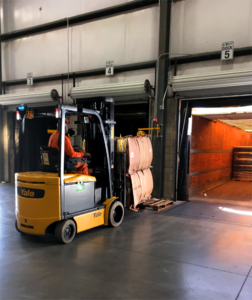 Products are received from suppliers across the country Products are received from suppliers across the country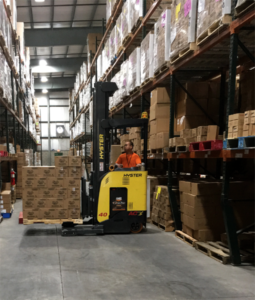 Products are unpacked and stocked in different areas of the warehouse Products are unpacked and stocked in different areas of the warehouse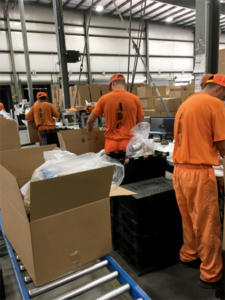 Packaging commissary orders Packaging commissary orders
|
Most weeks these operations go on ten hours a day, Monday through Thursday, with Friday hours more in the 7 to 8 hour range. But at certain times throughout the year, like holidays, there may be a surge in the number of offender orders coming through, forcing Friday’s to also be closer to a ten hour day.
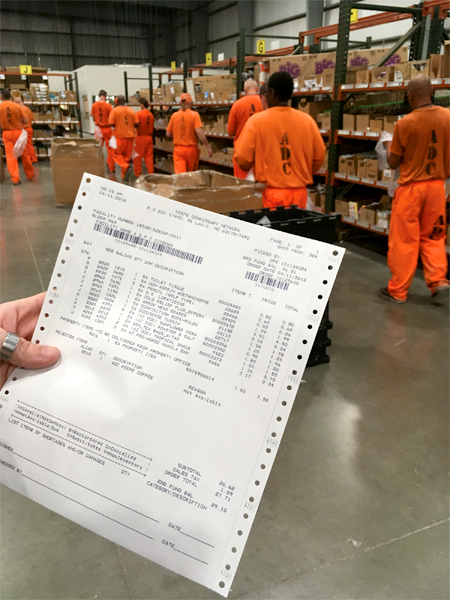 Commissary Orders are printed out with shelving codes Commissary Orders are printed out with shelving codes
|
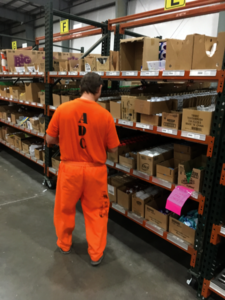 Crew members collect each line item from the order Crew members collect each line item from the order
|
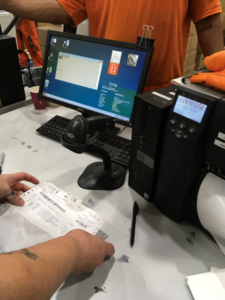 Each order is carefully checked for accuracy Each order is carefully checked for accuracy
|
 Some of the clothing Keefe sells to offenders is also manufactured by offenders in ACI Shops Some of the clothing Keefe sells to offenders is also manufactured by offenders in ACI Shops
|
 Specialty items, such as arts and craft supplies are found in other areas of the warehouse Specialty items, such as arts and craft supplies are found in other areas of the warehouse
|
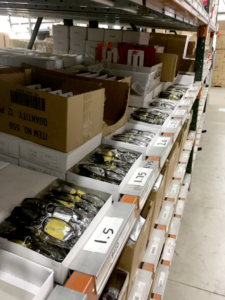 Prescription eyeglasses can also be purchased through the Keefe commissary Prescription eyeglasses can also be purchased through the Keefe commissary
|
| By employing offenders in their commissaries and the new warehouse, Keefe is helping them to learn important soft skills, such as effective communications, customer service and time management; in addition to the certified and technical skills they are learning and teaching to each other. As they learn they are also earning money that they can use to pay restitution, child support and to save for their release. Some of their earnings can also be used to buy products through the commissary in their unit back at the complex.
Luz Elena Carrasco-Casey and Mario Hernandez are two of the ACI security officers who transport the work crew to and from the Keefe warehouse each day help with counts and supervision throughout the work day. They are supervised by Michael McCarville, the Business Development regional manager. This partnership was announced at the National Correctional Industries Association (NCIA) 2017 Training Conference in Tucson, AZ, last April when Martin Jennen, Vice President for Keefe Group’s SecurePak division, described the new distribution warehouse that would be opened in Tucson. This great public/private industry partnership provides a needed service to the offenders, while it also creates a unique jobs-skills training opportunity for the offenders working in the commissaries and warehouses. |
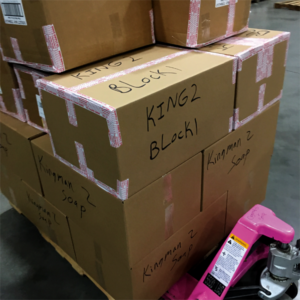 High-security items, like tobacco products and soaps, are sealed with tamper-proof tape High-security items, like tobacco products and soaps, are sealed with tamper-proof tape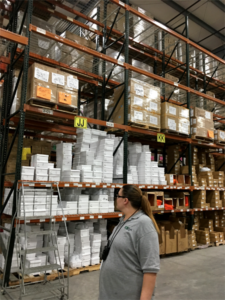 As orders are fulfilled, new supplies must constantly be received to replenish the shelves As orders are fulfilled, new supplies must constantly be received to replenish the shelves
|
Note:
1. Annual revenue estimates ($1.6 billion) from the Prison Policy Initiative
Reprinted from the Arizona Correctional Industries site.





